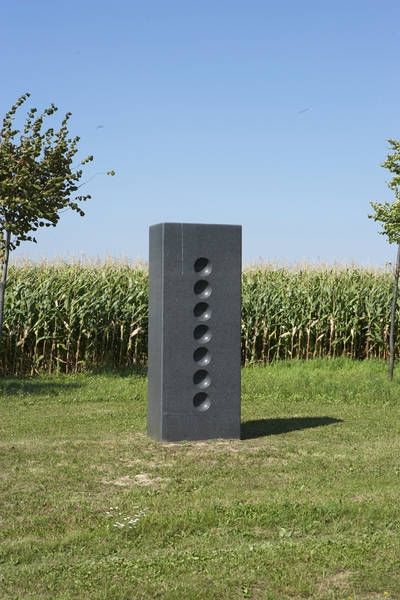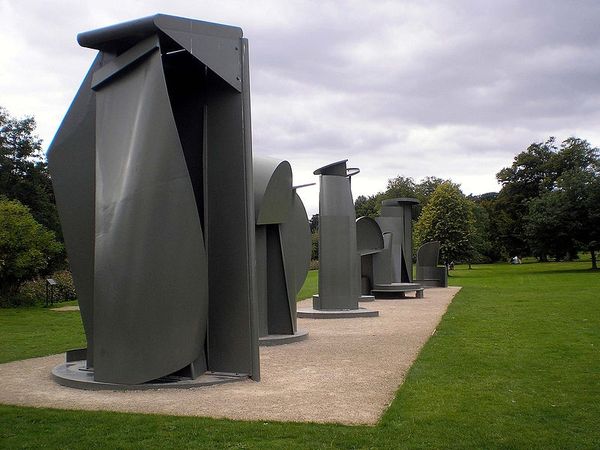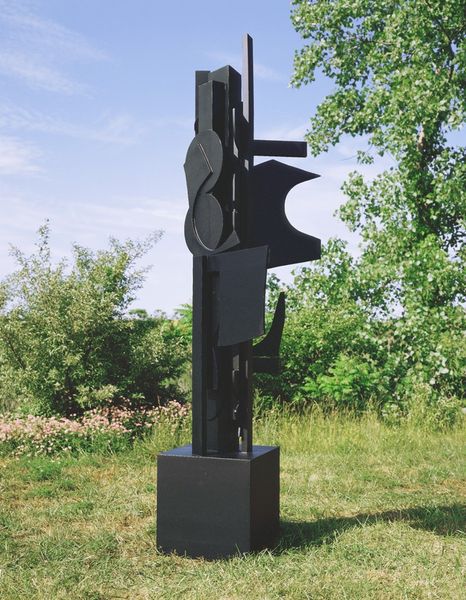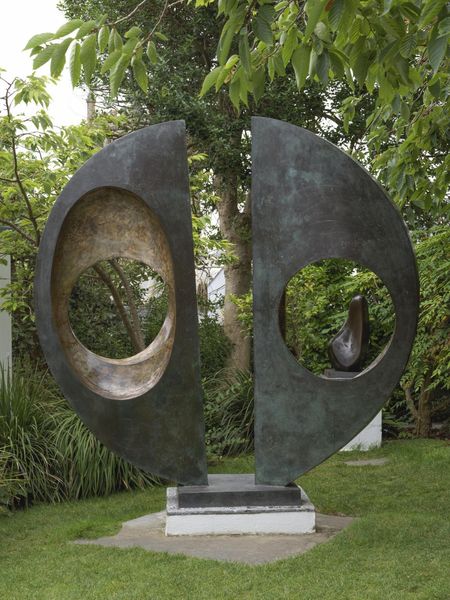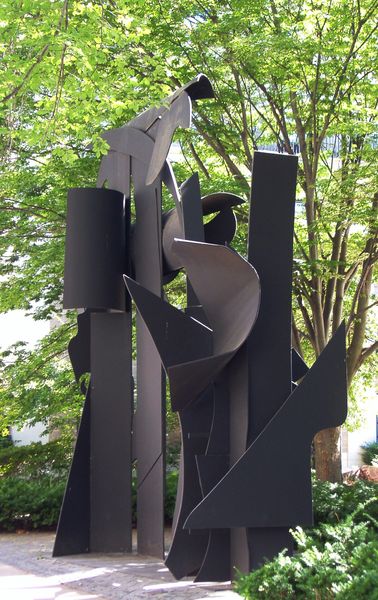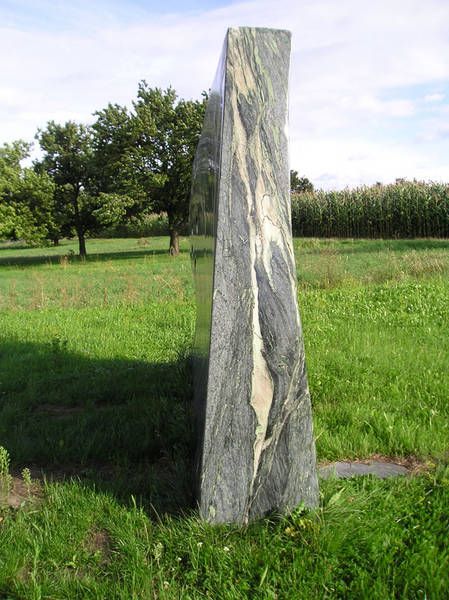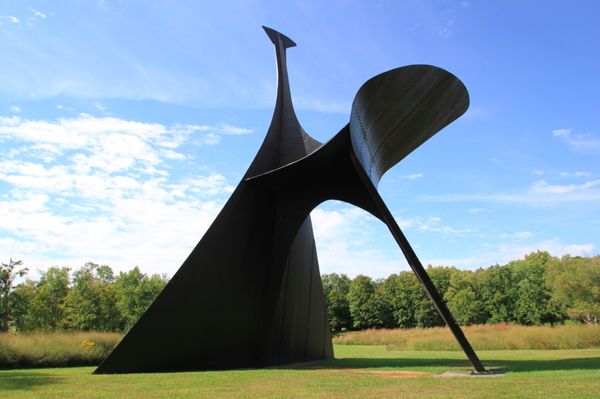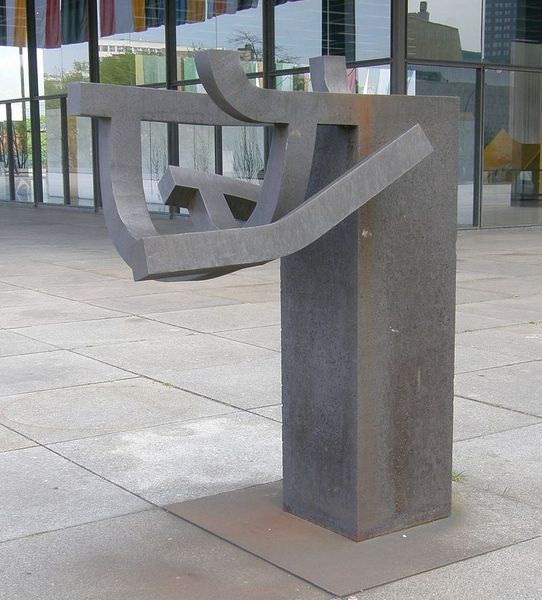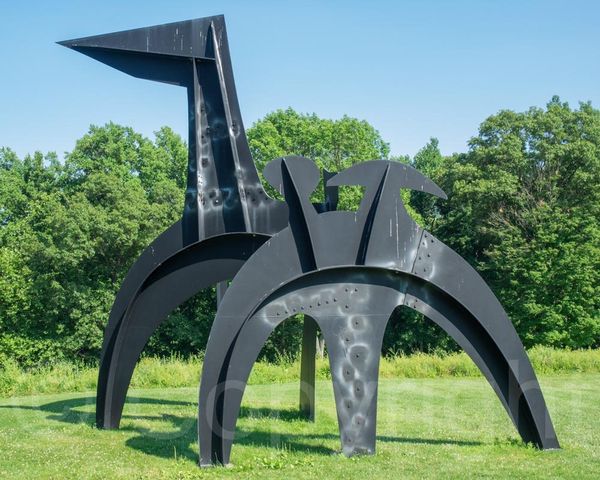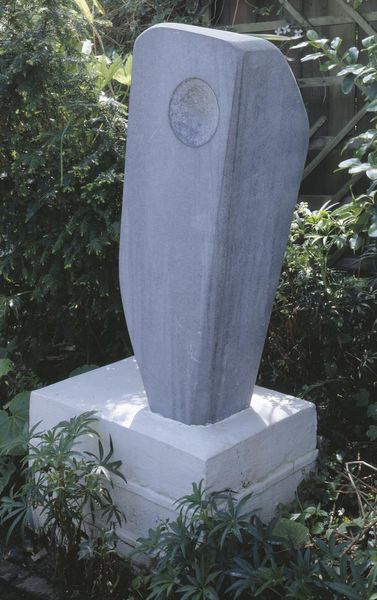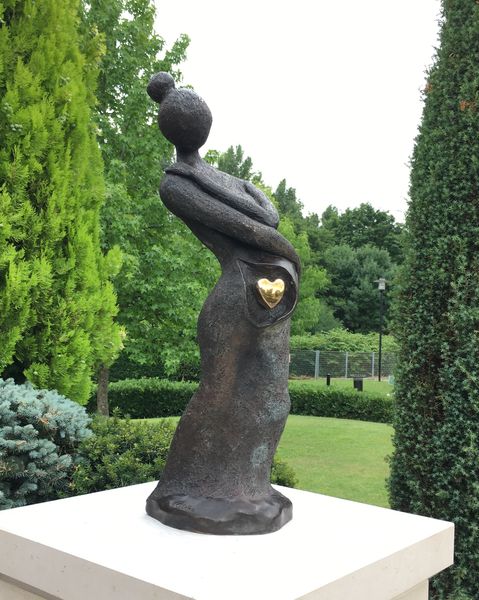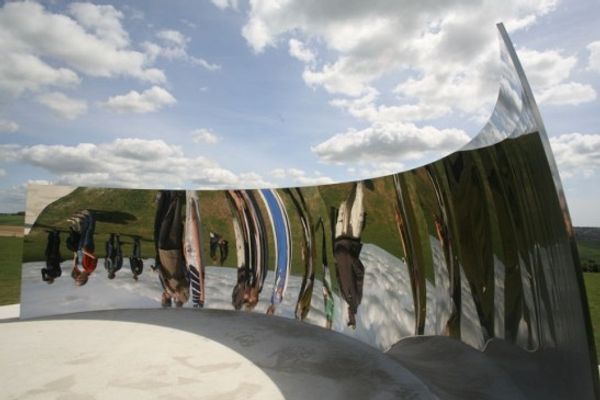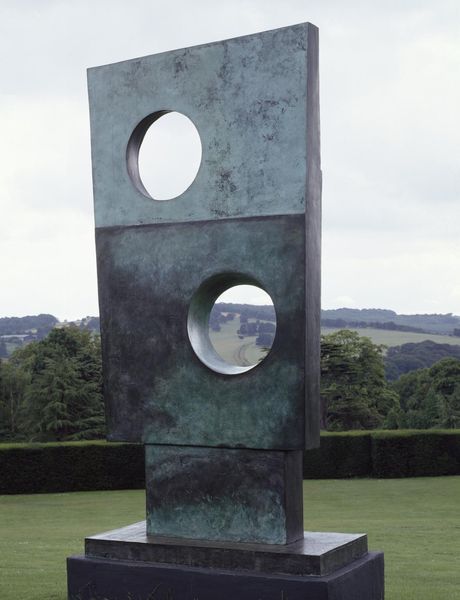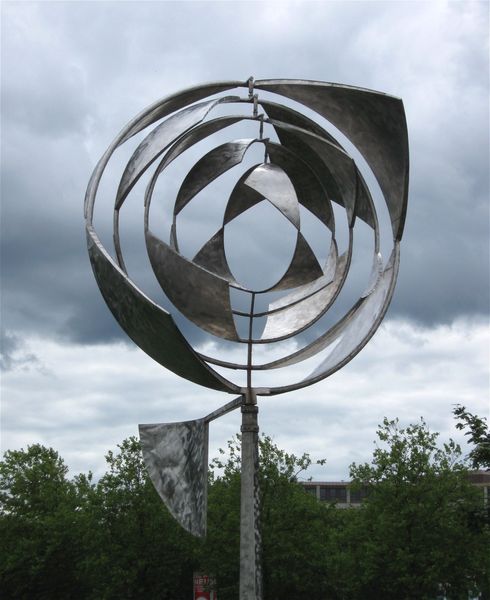
public-art, sculpture, site-specific
#
tree
#
public art
#
organic
#
angular perspective
#
grass
#
landscape
#
leaf
#
public-art
#
geometric
#
plant
#
sculpture
#
site-specific
#
urban garden
Copyright: Karl Prantl,Fair Use
Curator: Standing before us is Karl Prantl's "Meditationsstein," created in 2006. It is a site-specific sculpture, crafted as public art, and its presence here is quite striking. What's your immediate reaction? Editor: There's an intriguing duality at play. The stark, geometric form of the stone sharply contrasts with the organic setting of the field and trees. It almost feels like a monolith placed intentionally in a wild landscape. Curator: Prantl was deeply interested in the intersection of the natural and the constructed, especially as it impacts community and ritual. Consider the sociopolitical forces that have historically separated people from nature, and how modern sculpture might challenge this divide. This "meditation stone" could be considered a call for reintegration and peace. Editor: Yes, there's a feeling of seeking balance and promoting quiet introspection amidst the ever-increasing velocity of modernity. The placement feels critical. Public art becomes powerful when it is readily accessible and integrated within our lived experience. I'm curious about the public's engagement. Curator: This reminds me of feminist theory and intersectional views in public art, in which sculptures can reclaim and redefine public space for marginalized populations who may feel excluded from traditional art institutions. It presents a dialogue on who a "public" truly serves. The intent of Prantl, of course, was to promote introspection for anyone. Editor: Absolutely, I see the historical echo of sacred stones in pre-Christian cultures across Europe, repurposed into a space for individualized contemplation. How might it be interpreted in light of increasing privatization of public spaces? Curator: A keen observation. What is especially crucial is to look into the power dynamics inherent in public commissions. I'd be interested to know the process by which it was commissioned, and who gave it their approval. Ultimately, "Meditationsstein" may subtly but powerfully question the dynamics and politics of place and access. Editor: Prantl's piece encourages us to slow down, to pause in the rural everyday, which, through history, has had unique resonance for people of many social demographics. It invites you to create your own narrative, which is compelling in the face of public narratives over which many of us have no influence. Thank you.
Comments
No comments
Be the first to comment and join the conversation on the ultimate creative platform.
